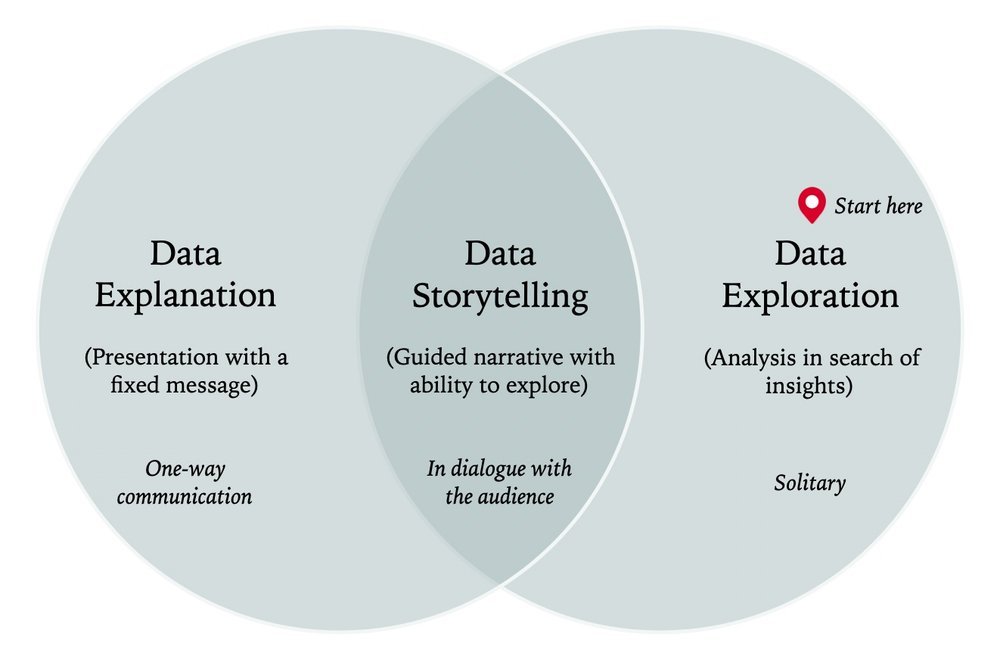Exploratory vs. Explanatory: The Difference Between Data Analysis and Data Presentation
🧭 Exploratory data analysis is...
...the "herding cats" 😸 stage of working with data. It is a chaotic, often solitary, exercise requiring persistence in search of insights.
...finding what matters in the data by connecting data sources, determining relationships within the data, and understanding what measures and dimensions are most important.
...the starting point for working with data. Without exploring and understanding your data, you cannot move on to explaining it to others.
📖 Explanatory data presentation is...
...the "herding cows" 🐮 stage of working with data. It is about pointing the data in a direction that will connect with other people.
...gathering insights and building a logical structure for communicating those insights. It requires understanding the audience for the data and knowing what matters to them in their role.
...the "last mile" of working with data to encourage people to take action on the insights.
🧭 + 📖 Can we combine exploratory and explanatory?
Sure. There is a middle ground that combines data explanation and data exploration. We can call it interactive data storytelling.
At this intersection, there is an opportunity to combine the guided narrative nature of data explanation with the ability to find new insights through exploration.
Look at some examples of these three categories below.
🧭 Data Exploration
With data exploration, the user has the flexibility to find insights. Using the selections and visualizations below, explore relationships between measures and look for patterns and outliers.
(This is data from the annual World Happiness Report)
🧭 + 📖 Interactive data storytelling
Sometimes it will make sense to combine the directed nature of data explanation with exploratory elements. The following data story steps the audience through the data but allows them to point their attention at the things they find most interesting.
A few takeaways
Data exploration, data explanation, and data storytelling exist along a spectrum, and no approach is right for all situations.
Generally, you'll start with data exploration then move toward more explanation as the insights and message emerge.
The ability to combine explanation with exploratory elements allows for collaboration with your audience.




